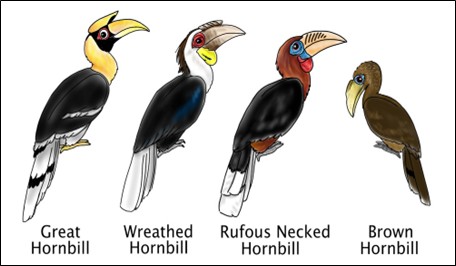PREVIOUS
Conservation of four species of hornbills 2025
April 4 , 2025
19 hrs 0 min
90
0
- The State has planned to establish a Centre of Excellence to conserve the Great Hornbill, the Malabar Pied Hornbill, the Indian Grey Hornbill, and the Malabar Grey Hornbill.
- The State boasts the last remaining habitats of four of the nine hornbill species found in India.
- The Forest Department has identified key areas for conservation: Anamalai Tiger Reserve (for the Malabar Grey Hornbill and the Great Hornbill), Athikkadavu-Pilloor-Bhavanisagar Valley (for the Malabar Pied Hornbill), and the drier forests like Sathyamangalam (for the Indian Grey Hornbill).
- The Great Hornbill and the Malabar Grey Hornbill are listed in the ‘vulnerable’ category of the IUCN Red List.
- The Malabar Pied Hornbill is described as a ‘near threatened’ species.
- The Indian Grey Hornbill, with widespread distribution in the country, is in the ‘least concern’ category.
- Hornbills are secondary cavity nesters as they do not make the cavity themselves, and the same cavities are used for nesting for many years.
- It is also aimed to protect the nesting trees, including the Dipterocarpus indicus, Cryptocarya anamalayana, and Myristica malabarica.
- Dipterocarpus indicus and Cryptocarya anamalayana are ‘endangered’, while the Myristica malabarica is ‘vulnerable’, according to the IUCN Red List.

Leave a Reply
Your Comment is awaiting moderation.


